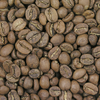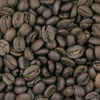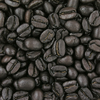 |
| From Green to Brown: Understanding the Coffee Roasting Process |
Coffee is one of the most cherished and consumed potables in the world, with millions of mugs being enjoyed every day. While coffee is generally associated with the rich aroma and flavor it offers, many people truly understand the process behind its creation. One of the most important stages in coffee products is the riding process, which transforms the green coffee sap into the sweet, rich brown sap that we all know and love. In this composition, we'll explore the coffee riding process in-depth, from the wisdom behind it to the different types of repasts, and everything in between.
The Science of Coffee Roasting
Coffee riding is an art that has been perfected over centuries. It's the process that transforms green coffee tire into the sweet, luscious brown coffee tire that we love to brew and drink. But what is the wisdom behind this process? How does riding affect the chemical and physical parcels of coffee tires? In this composition, we will explore the wisdom of coffee riding, from the chemical responses that take place during the process to the physical changes that do in the tire.
The Chemistry of Riding
we will claw into the chemical responses that do during coffee riding. We will explore the Maillard response, which is responsible for the browning of the tire and the development of flavor and aroma. We will also bat the breakdown of carbohydrates and the product of acids and other mixes that contribute to the taste and acidity of coffee.
The Physical Changes in Riding
The Art of Riding
we will bat the various riding styles and ways that are used by coffee cookers. We will explore the differences between light, medium, and dark meals, and the factors that determine the final feed position. We will also examine the significance of feed profiling and how it can be used to achieve asked flavors and aromas.
The part of Temperature and Time
we will beat the significance of temperature and time in coffee riding. We will explore the ideal temperature range for riding coffee tires, as well as the goods of temperature on the chemical and physical changes that do during riding. We will also examine the part of time in coffee riding, and how it affects the final feed position and flavor profile.
The Science of Blending
we will beat the wisdom of blending coffee tires. We will explore the various reasons why cookers blend different coffee tires, and how they determine the ideal blend rates. We will also examine how blending affects the flavor and aroma of coffee, and how it can be used to produce unique and complex mixes.
The Different Situations of Roast
The aroma of lately roasted coffee is one of the utmost inviting smells in the world. The roasting process, which takes the raw green coffee sap and transforms them into the ambrosial and scrumptious coffee that we all know and love, is a pivotal step in the trip of coffee from ranch to mug. One of the most important aspects of the roasting process is the position of repast. In this composition, we will explore the different situations of repast and how they affect the flavor profile of coffee.
The situation of Roast
Roasting coffee is a complex process that involves a delicate balance of time and temperature. There are generally four main situations of repast light, medium, medium-dark, and dark.
Light Roast
smoothly roasted coffee sap is light brown and has a dry face. The sap has a high position of acidity and a lighter body, with a mild flavor and no oil painting on the face. The light repast preserves the unique flavors of the coffee origin, making it ideal for single-origin coffee. Light repast is also called cinnamon repast or New England repast.
Medium Roast
Medium repast coffee sap has a medium brown color with a slightly unctuous face. This repast position brings out a balance between acidity and body, with a sweeter taste and aroma than light repast. Medium repast coffee has a fuller body and a slight caramelization of sugars in the coffee sap. It's the most popular repast position in the United States and is frequently appertained to as American repast.
Medium-Dark Roast
Medium-dark repast coffee sap has a dark brown color with a candescent face, indicating that the canvases have migrated to the face of the bean. The medium-dark repast position results in a slightly bitter taste with lower acidity than medium repast. The coffee has a full body, a heavier flavor, and a slight dark chocolate or caramel flavor. This repast position is also known as Full megacity Roast.
Dark Roast
Dark repast coffee sap is the darkest brown or black, with a veritably candescent and unctuous face. The coffee has a low acidity position, a heavy body, and a bittersweet taste. The repast position results in the loss of original flavors and creates a hoarse or burnt flavor rather. This repast position is also known as French repast or Italian repast.
Roasting Variables
Coffee riding is a pivotal step in the coffee production process. It determines the flavor, aroma, and color of the coffee sap. In this composition, we will explore the variables that affect the coffee riding process, including time, temperature, tailwind, and batch size.
- Time : The time the sap spend in the rotisserie is a critical factor in the coffee riding process. The longer the sap is roasted, the darker they come, and the more bitter and less acidic they come. Shorter riding times affect a lighter repast, with a more acidic and gooey flavor.
- Temperature : The temperature at which the sap is roasted also affects the final product. The advanced the temperature, the briskly the sap repast, and the darker they come. Lower temperatures affect a lighter repast, with a milder flavor.
- Tailwind : The tailwind in the riding chamber is also an important variable. The tailwind helps to circulate the hot air around the sap, which ensures an indeed repast. It also helps to remove the chaff that forms during the riding process.
- Batch Size : The size of the batch being roasted can also affect the final product. riding lower batches allows for better control over the variables mentioned over. lower batches also allow for further trials with different riding biographies.
The coffee riding process is an art that requires attention to detail and an understanding of the variables that affect it. Broilers must experiment with different times, temperatures, tailwinds, and batch size combinations to achieve the asked flavor and aroma. By understanding the variables involved in coffee riding, coffee suckers can appreciate the hard work and skill that goes into producing their favorite drink.
The Art of Blending
Coffee is a cherished libation enjoyed by millions of people worldwide. One of the secrets to creating a truly exceptional mug of coffee is the art of blending. Blending is the process of combining different coffee sap to produce a unique flavor profile that can not be achieved by using a single type of bean. In this composition, we will explore the art of blending and its significance in creating a truly remarkable mug of coffee. We'll also bandy how different sap are named for blending, as well as the part of riding in the blending process.
What's coffee blending?
Coffee blending is the art of combining different coffee sap to produce a unique flavor profile. Blending allows broilers to achieve a specific taste and aroma in their coffee that can not be achieved by using a single type of bean. When done rightly, coffee blending can affect a well- balanced and complex flavor that's lesser than the sum of its corridor.
The significance of blending in creating unique flavor biographies
One of the primary benefits of blending is the capability to produce a unique flavor profile that can not be achieved by using a single type of bean. Blending allows broilers to balance the acidity, body, and agreeableness of different sap to produce a coffee that's lesser than the sum of its corridor. This is why numerous coffee broilers keep their composites a nearly guarded secret, as it's frequently what sets them piecemeal from their challengers.
How different sap are named for blending
When opting for sap for blending, broilers must consider a variety of factors, similar to the origin, altitude, and processing system of the sap. For illustration, sap grown at advanced mound tend to have a more complex flavor profile, while sap grown at lower mound tend to have a milder taste. The processing system can also impact the flavor of the sap, as sap that is washed tend to have a cleaner flavor profile than those that are natural or honey reused.
Broilers may also consider the varietals of the sap, as some varietals are more suited for blending than others. For illustration, the Bourbon varietal is frequently used in composites due to its well-balanced flavor profile.
The part of riding in the blending process
riding is a critical step in the coffee blending process, as it can impact the flavor of the sap and the overall flavor profile of the mix. When riding different sap for a mix, the rotisserie must consider the repast position of each bean and how it'll impact the final flavor of the mix. For illustration, a lighter repast will save the acidity and brilliance of the sap, while a darker repast will bring out the body and agreeableness of the sap.
Sustainability in Coffee Riding
Coffee is one of the world's most popular potables, with millions of people enjoying it every day. still, coffee products and riding have a significant impact on the terrain, which has led to a growing concern for sustainability in the coffee assiduity. In this composition, we will explore the sustainability challenges in coffee riding, and how the assiduity is responding to them.
The Environmental Impact of Coffee Roasting
Coffee riding has a significant impact on the terrain, primarily due to the high energy consumption needed to rally coffee sap. In addition, coffee riding produces hothouse feasts, which contribute to climate change. The use of traditional riding styles, similar to wood-fired broilers, further exacerbates these environmental enterprises.
The part of Technology in Sustainable Coffee riding
Fortunately, advancements in technology have allowed for further sustainable coffee riding practices. One of the most significant advancements is the development of electric broilers, which are significantly further energy-effective than traditional broilers. also, some coffee broilers have espoused solar-powered riding installations, which significantly reduce their carbon footmark.
Sustainable Sourcing
Another pivotal aspect of sustainability in coffee riding is the sourcing of coffee sap. numerous coffee broilers are now sourcing their sap from sustainable and fair-trade sources. These sources ensure that growers admit fair prices for their sap, which promotes social sustainability. also, sustainable coffee husbandry practices, similar to shade-grown coffee, help to save the terrain by maintaining biodiversity and precluding deforestation.
Recycling and Waste Reduction
Coffee riding also produces a significant quantum of waste, including chaff and coffee grounds. still, numerous coffee broilers are now enforcing recycling and waste reduction programs. For illustration, some coffee broilers are using chaff as an energy source, while others are partnering with original granges to use coffee grounds as a toxin.
In conclusion, the coffee riding process is a pivotal step in transubstantiating green coffee sap into the sweet, scrumptious brown sap that we know and love. The process involves colorful stages of heat and chemical responses, which bring out the distinct flavors and aromas of the coffee. From the original drying phase to the critical first and alternate cracks, every aspect of the process can affect the final product's taste, acidity, and body.
riding is both an art and wisdom, taking skill and knowledge to produce the perfect repast. still, it's important to flashback that everyone's taste preferences are unique, and there's no bone " right," way to rally coffee. Experimentation and experience are crucial to changing your preferred repast profile.
It's also worth noting that the coffee assiduity is constantly evolving, and new riding ways and technologies are being developed all the time. still, understanding the basics of the coffee riding process will give you a solid foundation for exploring the world of specialty coffee and appreciating the nuances of different repasts.
Whether you are a coffee sucker or a professional rotisserie, taking the time to understand the coffee riding process will consolidate your appreciation for this cherished libation and allow you to savor its complex flavors and aromas indeed more completely.
resources
- "The Coffee Roaster's Companion" by Scott Rao: https://www.amazon.com/Coffee-Roasters-Companion-Scott-Rao/dp/1495118197
- "Coffee Roasting: Magic or Science?" by Kenneth Davids: https://www.coffeereview.com/coffee-reference/coffee-basics/coffee-roasting-magic-or-science/
- "Roasting Basics" by Sweet Maria's: https://library.sweetmarias.com/roasting-basics/
- "Roasting Coffee at Home" by The Spruce Eats: https://www.thespruceeats.com/how-to-roast-coffee-at-home-765325
- "The Roasting Process" by Blue Bottle Coffee: https://bluebottlecoffee.com/preparation-guides/the-roasting-process


















0 Comments